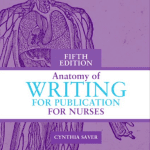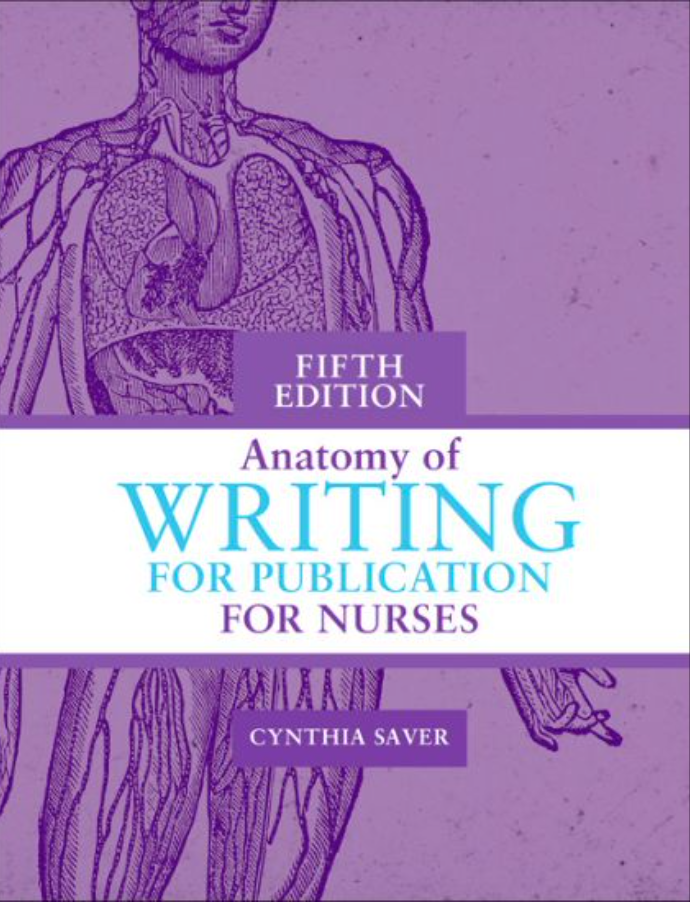

I work with nurse writers every day. I edit their articles, provide suggestions for concision, query for clarification, and gently trim information that distracts from the main topic. Writing is a skill that requires practice, guidance, and more practice. I believe that every nurse who wants to write for publication should spend quality time with the newest edition of Anatomy of Writing for Publication for Nurses.
This fifth edition from editor Cynthia Saver, MS, RN, and 25 contributors serves as a comprehensive resource for any nurse interested in writing. Whether you’re considering writing your first article for publication and have no idea where to start or you’re simply looking to upgrade your writing skills and expand your publishing reach, this book contains critical information to help you achieve your goals.
New edition highlights
All chapters have been updated to reflect current publishing practices. Here are a few highlights:
- The use of artificial intelligence (AI) in writing remains a hot topic in publishing. The new edition offers guidance in how to use it without compromising integrity and creativity.
- Video and graphic abstracts continue to grow in popularity. Learn how to create effective ones to help disseminate your work.
- The expanded section on inclusive language offers more insight to help ensure your writing doesn’t exclude patient and professional populations.
This edition includes two new resources for those who teach writing:
- A facilitator guide includes a summary of each chapter and writing exercises for students.
- A student workbook helps students build their writing skills.
Both resources contain a detailed algorithm of the publication process that isn’t included in the main book.
Meeting your goals
Three key features of the book will help you accomplish your writing goals.
Expertise. Saver has been in publishing for more than three decades, with experience as both an editor and author. The contributors joining her in this edition also have a wealth of expertise. Collectively, they’ve written all types of articles, edited articles, conducted peer reviews, and served on journal editorial boards. They’ve also served as journal editors—those who make decisions about what to publish.
Scope. No matter what type of publication you have in mind, you’ll find it in this book. In addition to traditional topics, such as writing research and clinical articles, the contributors cover topics that aren’t common in general writing books for nurses, such as book chapters, nursing narratives, continuing education programs, and writing for a general audience. The book also offers help for global authors and includes an entire chapter on disseminating your work. Dissemination frequently gets overlooked, but it’s critical to delivering your message.
The book’s two-part structure makes its broad scope easily accessible:
- Part 1 gives you the nuts and bolts about writing for publication, from finding and focusing an idea to final review of the edited article and dissemination. It also includes suggestions for breaking down barriers to writing, tips for working with a team of authors, and information about open access publishing and how to avoid predatory journals (disreputable journals that charge authors unreasonable fees in exchange for publication).
- Part 2 discusses more than 10 different publication types (such as review articles, research reports, evidence-based projects, posters, and converting your school project into an article), so you can access specific advice when you need it.
Tone. Writing can be hard, especially if you’re a beginner, and even experienced writers can feel intimidated from time to time. Saver and the contributors help make the writing process easier. In addition to engaging content, the lively, approachable style makes the information easy to absorb. The book may look intimidating at first, but dig in and you’ll find it’s an easy read.
Within your reach
Remember, practice and guidance serve as keys to building your writing skills. You learned many nursing skills the same way. You have to do the practicing, but this book offers the guidance to support you along the way. Writing for publication is within your reach.



















1 Comment. Leave new
Very great and relatable information! Always comes on time! Thanks for this journal!